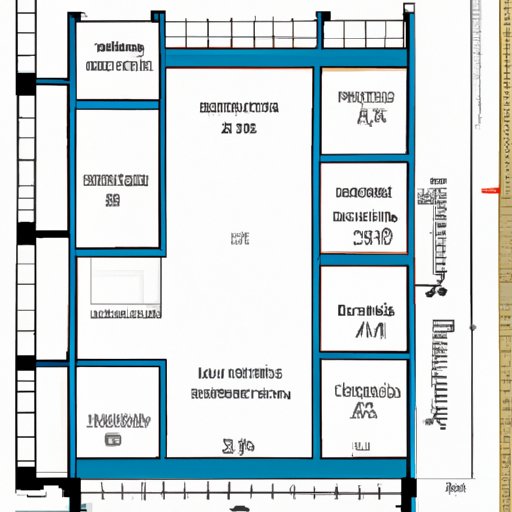Introduction
Building a house is an exciting process, but it can quickly become overwhelming if you don’t know what size of house will fit on your lot. To determine the right size of house for your lot, you must consider many factors, including local building regulations, setbacks and easements, and the layout of your lot. This article provides an overview of these factors, as well as tips for maximizing space when building a house.

Exploring the Factors for Determining What Size House Will Fit on Your Lot
When determining what size of house will fit on your lot, the first step is to understand the local building regulations in your area. These regulations typically include zoning laws, which dictate where different types of buildings can be located, and building codes, which set standards for construction safety and quality. Additionally, your city or county may have specific requirements for setbacks, which are the minimum distances between a house and the property line, and easements, which give certain individuals or organizations the right to access your land. It is important to research these regulations before beginning the construction process.
Once you have an understanding of local building regulations, you need to take a closer look at your lot’s dimensions. The shape and size of your lot will play a major role in determining what size of house you can build. You should also take into account any setbacks or easements that may limit the amount of usable space on your lot.
A Guide to Choosing a Home to Fit Your Lot’s Dimensions
When choosing a house plan for your lot, it’s important to consider the square footage of the home. According to the National Association of Home Builders, the average size of a single-family home in 2019 was 2,422 square feet. However, depending on the size and shape of your lot, you may need to choose a smaller or larger house plan.
To get an accurate estimate of the size of house that will fit on your lot, you will need to measure the lot’s dimensions and calculate its area. This process can be done with a measuring tape, a calculator, and some basic geometry skills. Once you have calculated the area of your lot, you can compare it to the square footage of different house plans to determine which ones will fit on your lot.

How to Accurately Measure and Calculate the Size of Your Lot
Measuring and calculating the size of your lot is a straightforward process. First, you will need to gather the necessary tools, including a measuring tape, a calculator, and a pencil and paper to take notes. Next, start at one corner of your lot and use the measuring tape to measure the length and width of each side. Make sure to record these measurements as you go. Finally, add up the length and width measurements to calculate the total area of your lot.
For example, if your lot is 10 feet long and 12 feet wide, the total area of your lot would be 120 square feet (10 x 12 = 120). Knowing the area of your lot will help you determine what size of house will fit on it.
The Pros and Cons of Building a Smaller or Larger House on Your Lot
Once you have determined the area of your lot, you can decide whether to build a smaller or larger house. Generally speaking, building a smaller house has several advantages. It is typically cheaper to build, takes less time to complete, and consumes fewer resources. Plus, you can often get more creative with design since you won’t be limited by space.
However, there are also drawbacks to building a smaller house. For example, it may not be able to accommodate large families or provide enough storage space. Additionally, a smaller house may lack the features and amenities found in larger homes, such as multiple bathrooms, home offices, and laundry rooms.
On the other hand, building a larger house has its own set of pros and cons. Generally speaking, a larger house provides more space for entertaining guests, storing belongings, and accommodating multiple family members. Additionally, it often includes more features and amenities than a smaller house. However, a larger house is more expensive to build, takes longer to complete, and consumes more resources.

Tips for Maximizing Space on Your Lot When Building a House
No matter what size of house you decide to build, there are some tips you can use to maximize the available space on your lot. First, consider utilizing vertical space by building multiple stories or a basement. This will allow you to create additional living space without taking up more room on your lot.
Second, work with an experienced architect who understands how to make the most of your lot’s size and shape. They can help you design a house that maximizes the available space and meets all local building regulations. Finally, strategically placing windows throughout the house can help create the illusion of more space. Natural light can make even small rooms appear bigger.
Conclusion
Exploring what size of house will fit on your lot can seem daunting. However, with the right information and tools, you can make an informed decision about the size of house that is appropriate for your lot. Start by researching local building regulations and understanding your lot’s dimensions. Then, use a measuring tape and calculator to accurately measure and calculate the area of your lot. Finally, consider the pros and cons of building a smaller or larger house and utilize tips for maximizing space when building a house.
By following these steps, you can make sure that your new house fits perfectly on your lot.
(Note: Is this article not meeting your expectations? Do you have knowledge or insights to share? Unlock new opportunities and expand your reach by joining our authors team. Click Registration to join us and share your expertise with our readers.)
